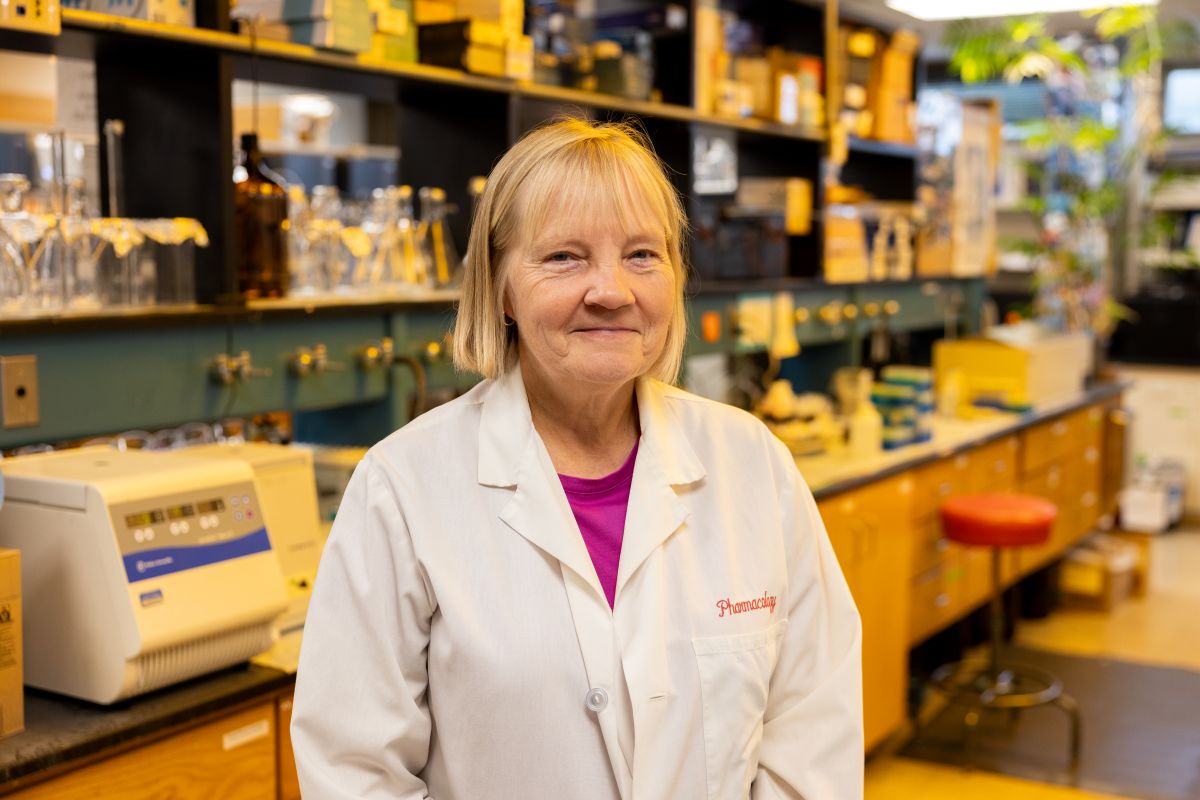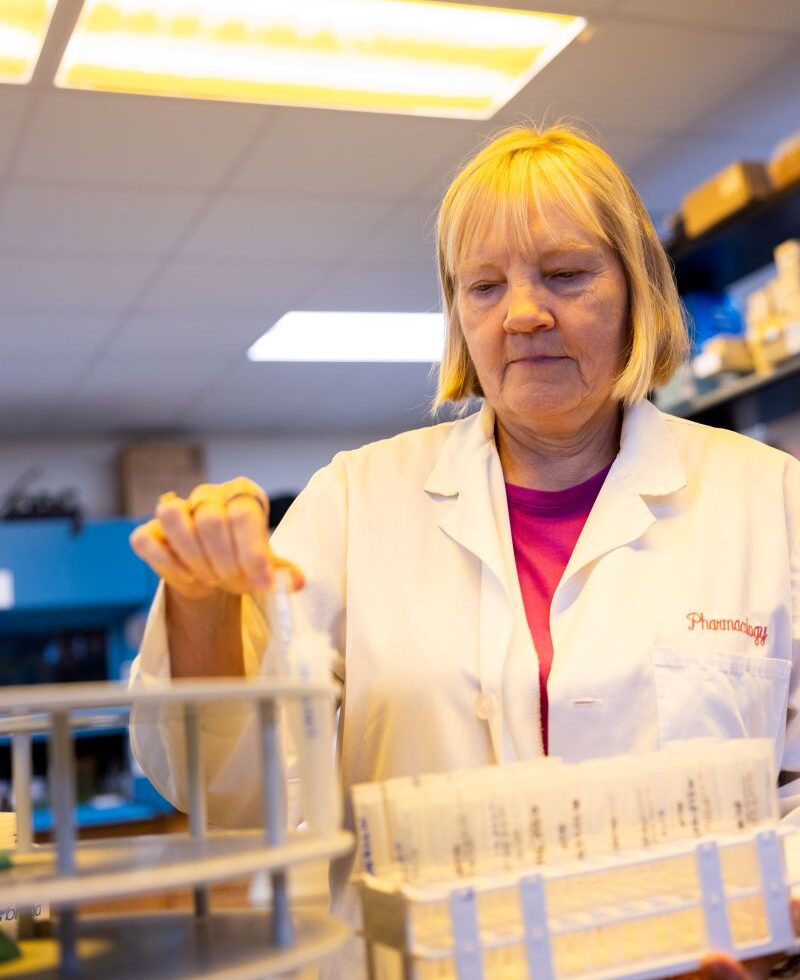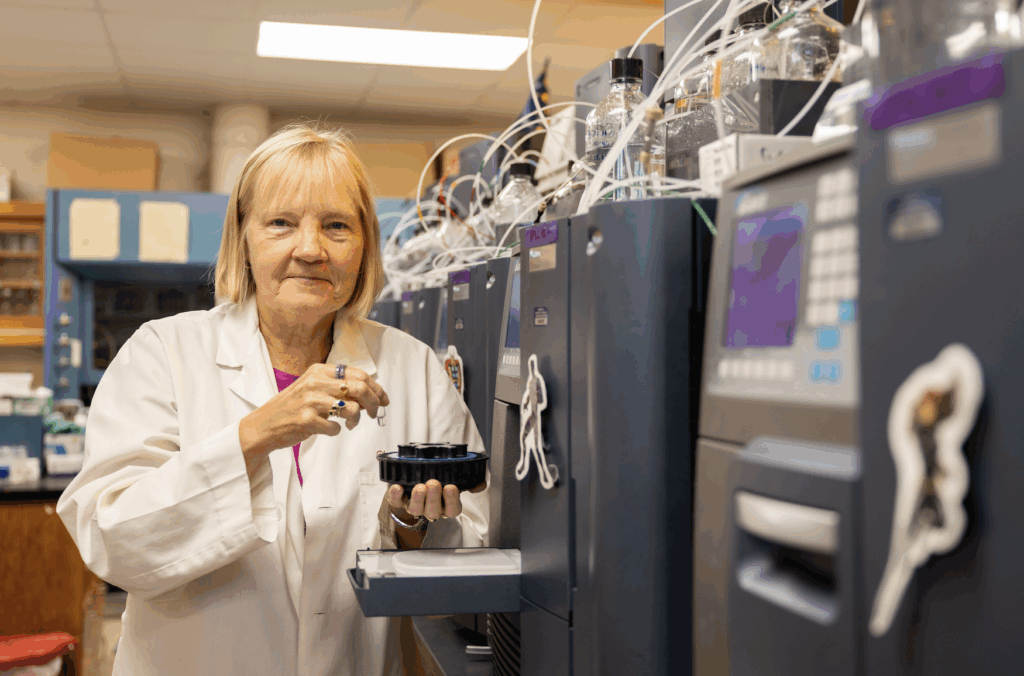
Clinical professor at UTCVM leads one of the nation’s top veterinary pharmacology labs, advancing animal care through research and mentorship
Where are you from, and how did your career lead you to the University of Tennessee College of Veterinary Medicine (UTCVM)?
I am from East Tennessee. I was working on a degree in Toxicology at East Tennessee State University and my advisor introduced me to several faculty members at the UT College of Veterinary Medicine. I applied for a position, and the rest is history.
What inspired you to pursue a career in pharmacology, and what does an average day in the life look like for you as director of the Pharmacology Lab?
I consider myself an analytical pharmacologist because I like instrumentation and I like being able to help veterinarians determine the right treatment plan.
Can you describe the process of establishing the Pharmacology Lab at UTCVM? What were some challenges you faced, and how did you overcome them?
To establish something takes time. You have to provide a service that is needed, and you have to provide accurate, dependable results. If something isn’t correct, it could cost an animal its life. So, it took time to establish the lab, and of course funding is always an issue. We had to obtain the necessary equipment, which is expensive, to perform the type of work that we do. Ultimately, it took time and persistence. We did manage to acquire funding for the instrumentation and personnel that we needed, and we have since developed a reputation for being one of the top labs in the country.
What is your main research focus, and how has your work advanced the field of veterinary pharmacology?
My focus is to advance research, and we are currently collaborating with many other investigators. Today as I write this, we are working on seven different projects with people from zoos, aquariums and universities across the country and next week we may have a dozen more different projects that we will start.
What does an average day in the life look like for you?
My day is spent looking at data, doing pharmacokinetic modeling, writing grants and manuscripts and checking on the status of projects and the scheduling of future projects. I never know exactly what I am going to see when I open my email. It could be a request to determine the amount of drug in a turtle shell because it has a fungal disease that affects the shell and the vet needs to know if the drug is reaching the target location, or to determine the amount of Pepcid in goats and sheep because they get ulcers and the vet doesn’t know what dose to give them. Another email asked if we could help with the determination of an extended-release antibiotic in tigers. This drug was advantageous for their treatment because it didn’t require frequent dosing. Imagine some people take a pill every 12 hours for an infection – what if you were trying to give a tiger a pill every 12 hours? My email is always an adventure.

What has been the most rewarding part of your 37-year career at UTCVM?
That’s easy – the people, especially the students and residents that I mentor. To see them succeed in whatever path they have chosen makes my heart smile. One of my previous students made a comment to me that she hoped her children were half as lucky as she was to find someone like me for a boss because of the grace and care that I had shown her while she was becoming and an adult.
With more than 150 publications, what has been the most memorable or impactful study you’ve worked on?
That’s a tough question. We analyze drug levels in samples from zoo and aquarium animals nationwide, from tiny mice to majestic elephants. Whether it’s a dolphin with an infection or a tiger in pain, we help veterinarians determine the right treatment, including how much medicine is best for each animal. We’ve even tested milk from a nursing whale. Our work spans from penguins and sea lions to farm animals like cows and chickens. It’s all about ensuring these amazing creatures get the care they need to thrive. So honestly every study is important.
What role does collaboration play in the success of your lab and research, particularly across disciplines within biomedical and diagnostic sciences?
Collaboration is everything for us. We collaborate with researchers both within UTCVM and outside the college across the country. I particularly try to help junior faculty trying to develop their research programs and residents who need research projects to sit for their board examinations. At this stage of my career, I believe that’s something that I should do.
You’ve mentored countless students, residents and junior faculty. What advice do you find yourself giving most often to those entering the field?
I tell the students to find something that makes them happy. Eight hours a day is a long time to spend doing something you don’t like to do. You can’t do everything at once, so I tell them all: right foot, left foot, breathe.
What do you like to do outside of work and/or what is a fun fact about yourself that your colleagues and students wouldn’t know?
I like to do photography, travel and spend time in the wood shop. A fun fact: I was a soundperson for a local band for years. My work at UT was my day job and being a soundperson was my night job.

